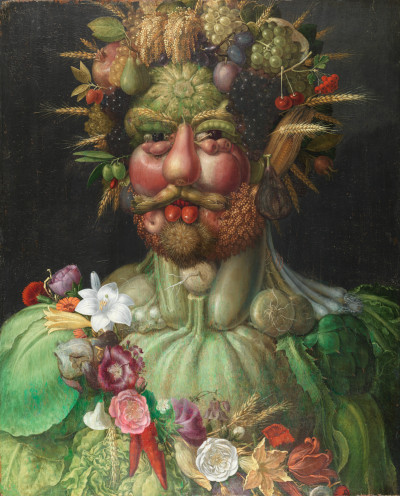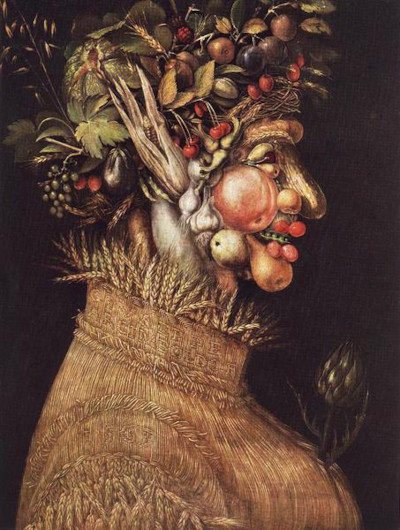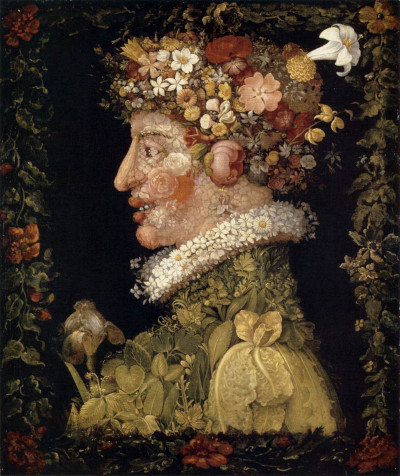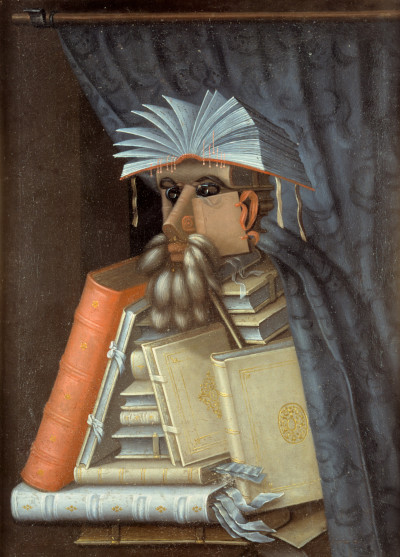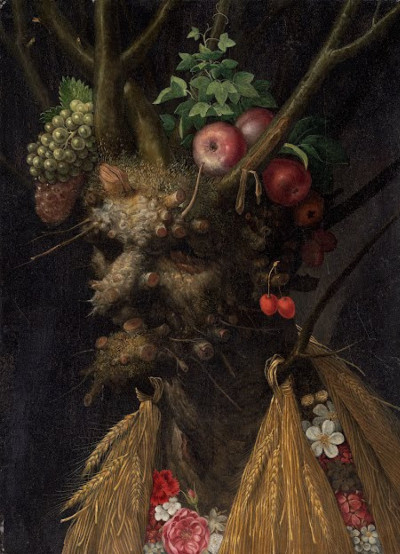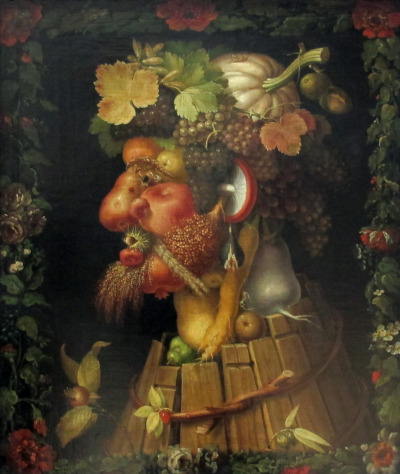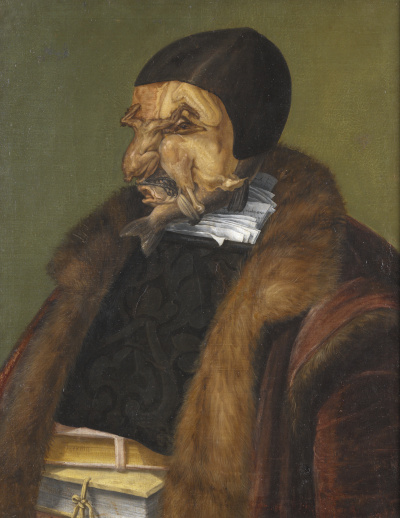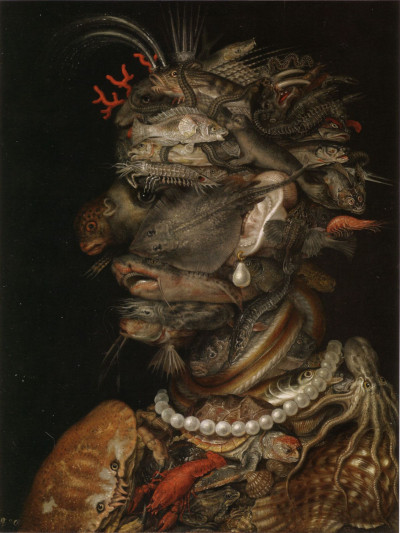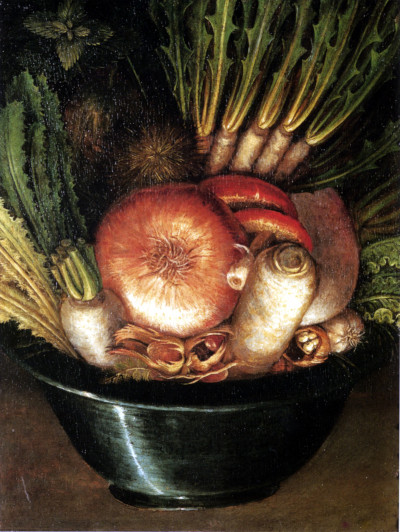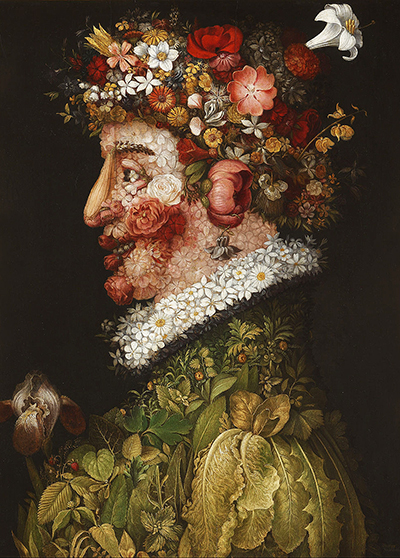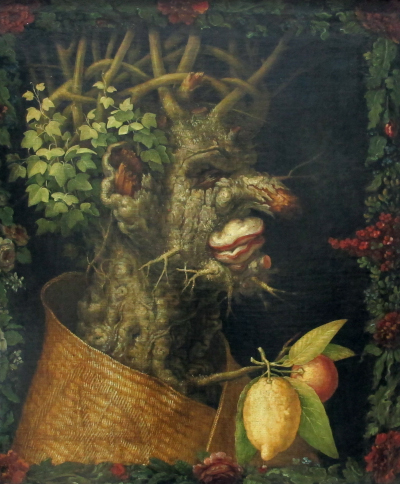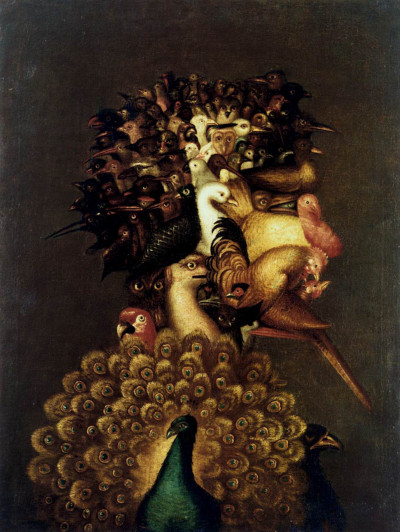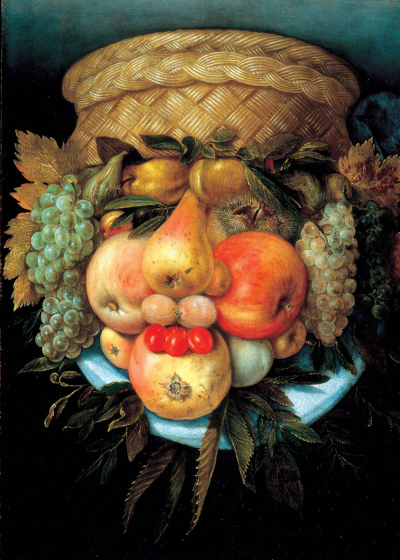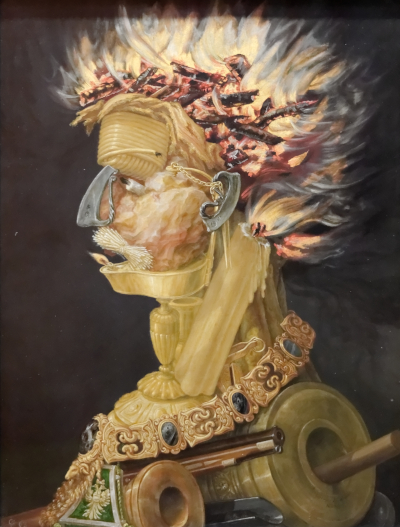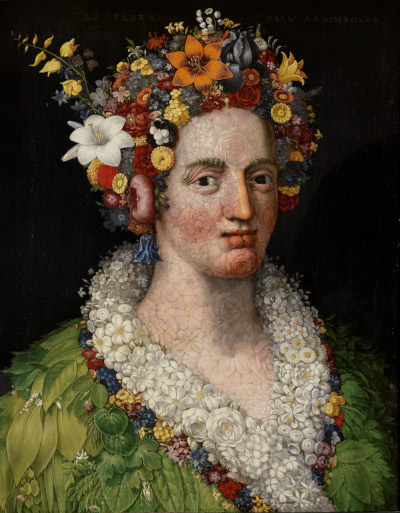Giuseppe Arcimboldo was a unique artist, in the truest sense of the word. His paintings produced portraits from carefully arranged still life objects, such as fruits, vegetables, flowers and fish.
Arcimboldo's paintings can be described as grotesque, just as were Aubrey Beardsley's, but this is not a judgement of their quality, but more a comment on the style in which the artists worked. Giuseppe Arcimboldo was a classically trained artist who worked successfully as a court painter on relatively mainstream topics before creating a niche all of his own. Today he is most famous for his arrangements of fruit to form portraits, and his more traditional portraits are fairly in keeping with the styles of the time. Indeed, one can recognise his art pretty much immediately, which cannot be said about most Renaissance artists. During the 16th century it was entirely normal to desire to be a court painter, where relative security was offered, but in return an artist would sacrifice most of their own creativity and independence. That said, he was able to amuse the court with this playful approach to portraiture, ensuring that with an innovative mind he was still able to flourish within the constraints placed upon him.
Somewhat inevitably, for someone who had such an unusual artistic style, critics have either loved or despised his work over the centuries. Some have not taken him seriously, whilst others have lauded his humour and innovation as an alternative to the otherwise serious nature of Italian Renaissance art. To a certain degree, the same situation remains today and this polarisation continues into the general public who also hold contrasting views about the style and quality of his work. It must also be said that some of his works have been lost to the realms of art history, particular some of his religious artworks. The items that he chose to combine for his portraits were often connected to the identity of the model, and were not chosen at random. On some occasions he would leave messages within these portraits, and so they offered more than just aesthetic pleasure. He was able to get away with subtle messages that criticised the richer members of Italian society by hiding them within his work.
Whilst working within the Habsburg court it is likely that Arcimboldo would have come across some impressive figures from other intellectual fields. These might have helped to inspire his work, bringing subjects such as Zoology, Alchemy and Astronomy to his attention. His personality seemed unsuited to conformity and his curious nature would appear within the style of his paintings. Thankfully, members of the court approved of his artistic style and allowed him to continue in this vein. He is generally classified as a Mannerist artist but this umbrella term contains wide variations of artists and does not really get to the unique nature of his approach. In terms of a connection to modern art, one can certainly see similarities with 20th century Surrealism, in how items from reality are re-constructed in arrangements that would not normally be seen in real life. It would essentially bring dreams to life within the visual arts, and Arcimboldo's approach certainly fits into that rough category.



